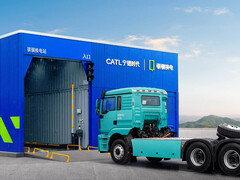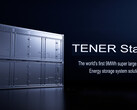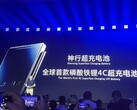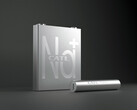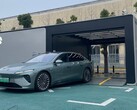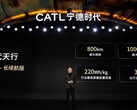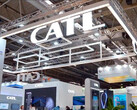Tesla owners in China have started to express their appreciation for the battery swap concept that companies like CATL and NIO have adopted. The contrast of charging speeds couldn't be starker, complained one Tesla influencer there.
"Another NIO came and gone, this time I timed it," they posted while sitting at a Supercharger close to a NIO battery swap station. "The moment it parked into the bay and completed the swap it only took 3 mins and 30 seconds," they reported and added that they are "a bit jealous over here as it’s gonna take at least 40 mins" with their Tesla.
Pioneered by EV makers like NIO, the EV battery swap concept has now been endorsed by the world's biggest battery maker, CATL. First it partnered with NIO over swap station and powertrain know-how, then it made long-life battery packs standardized for swapping, and it is now building its own swap stations for passenger and commercial vehicles alike.
First swappable heavy-duty truck battery
CATL is so convinced in the viability of the swap concept, that it has bet a number of projects on its prediction that battery swapping will cover a third of all electric vehicle charging needs by 2030.
According to its CEO Robin Zeng, that includes commercial vehicles like heavy-duty trucks, too, where the electrification rate is expected to reach 50% just in the next three years or so. There are now more than 30 electric truck models by 12 manufactures that use CATL's Qiji swappable battery chassis, with their number predicted to increase dramatically
To prepare for the onslaught of heavy-duty electric trucks, CATL announced the first standardized swappable battery pack for them, dubbed #75, just as the standardized #20 and #25 packs for passenger EV swap stations that CATL already unveiled last year.
The #75 truck packs will be installed in the swap stations that CATL is operating via its subsidiary Qiji Energy. There will be 300 of those built in 2025 alone, with a full-fledged truck battery swap station network with thousands of locations planned to cover all key transportations regions in China by 2030.
The new #75 heavy-duty battery pack takes just five minutes to swap out with a fully charged one at a Qiji station, says CATL, and the concept can save more than $8,000 per 100,000 km of operation compared to a gas-powered truck.
CATL acknowledges that the fuel savings compared to a truck running on LPG are humbler, but says that the swapping process is more efficient, while the global market fluctuations in the price of LPG still make investing in an electric truck a viable option.
Get the Tesla Universal Wall Connector EV Charger with Dual Plug on Amazon
Source(s)
CATL (Weibo)




